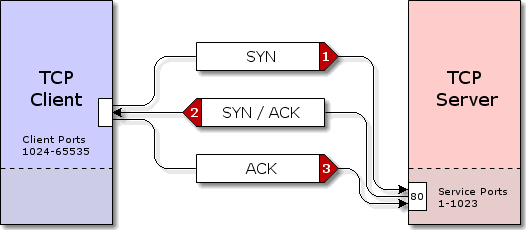The TCP 3-Way Handshake: What It Is and Why It’s Important
Have you ever wondered how two devices on the internet start communicating? Just like how we greet someone before diving into a conversation, computers also have a "hello" process called the TCP 3-way handshake. It’s the foundation of reliable communication over the internet. Let’s explore how it works step by step.
What Is a 3-Way Handshake in TCP?
The TCP 3-way handshake is a method used by the Transmission Control Protocol (TCP) to establish a reliable connection between two devices. It ensures that both devices are ready to send and receive data without any hiccups. Think of it as the internet’s version of agreeing to the terms before starting a chat.
Breaking Down the Handshake
The handshake involves three key steps: SYN, SYN-ACK, and ACK. Let’s look at each of them:
SYN (Synchronize): Device A sends a message to Device B saying, “Hey, I’d like to talk. Are you there?” This is called a SYN packet, which includes a sequence number to track data.
SYN-ACK (Synchronize-Acknowledge): Device B responds, “Got it! I’m here and ready. Let’s sync up.” It sends back its own sequence number and acknowledges Device A’s request.
ACK (Acknowledge): Device A replies, “Great! We’re in sync. Let’s start talking.” This final acknowledgment completes the handshake, and the connection is officially established.
It’s like introducing yourself, confirming you’re both on the same page, and then starting a meaningful conversation.
Why Is the Handshake Important?
The handshake is crucial because it ensures the connection is:

Reliable: Both devices agree on how to send and receive data.
Organized: Sequence numbers help keep track of the order of data.
Secure: The process verifies that both devices are active and ready to communicate.
Skipping this step would be like trying to deliver a package without confirming the recipient’s address. Chaos would ensue!
What Happens After the Handshake?
Once the handshake is complete, data can flow seamlessly. Here’s what happens:
Data Segmentation: Large messages are broken into smaller packets, each with a sequence number.
Acknowledgments: For every packet received, the receiver sends an acknowledgment (ACK).
Error Checking: TCP ensures that any lost or corrupted packets are retransmitted.
This mechanism ensures that all data arrives in the correct order, without any loss or duplication.
Key Concepts to Remember
Reliable Connection: The handshake establishes trust between devices.
Sequence Numbers: These act like page numbers in a book, keeping data organized. 📖
Acknowledgments: Every “Got it!” from the receiver ensures smooth communication.
Fun Analogy: The Pizza Delivery
Imagine ordering a pizza:

You call the pizzeria (“SYN”).
The pizzeria confirms your order and promises to deliver (“SYN-ACK”).
You say, “Great, I’ll wait for it!” (“ACK”).
Only then does the pizza arrive—hot and delicious! Similarly, the TCP handshake ensures that data gets delivered just as expected. 🍕
The TCP 3-way handshake might seem like a small step, but it’s the backbone of the internet’s reliability. Without it, our online experiences would be riddled with errors and dropped connections. So, the next time you stream a video, send an email, or join a video call, thank the humble handshake for making it all possible. 🌐
Conclusion:

The TCP 3-way handshake is a crucial process that ensures reliable communication between devices on the internet. It involves three key steps: SYN, SYN-ACK, and ACK, which help establish a secure and organized connection. This handshake facilitates the seamless exchange of data by maintaining order and acknowledging received packets, akin to confirming a pizza order before delivery. Understanding this process highlights its importance in keeping our online interactions smooth and error-free.
